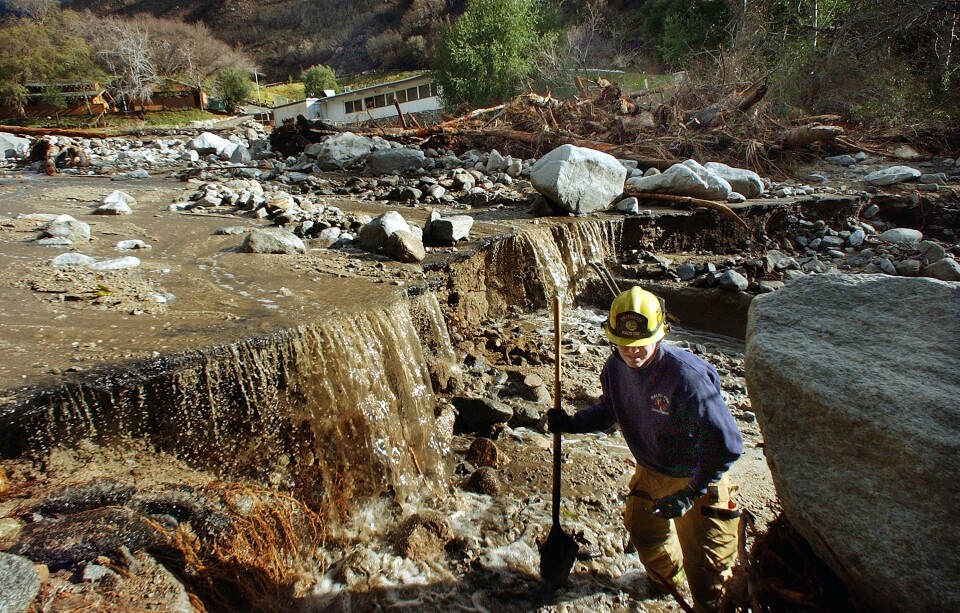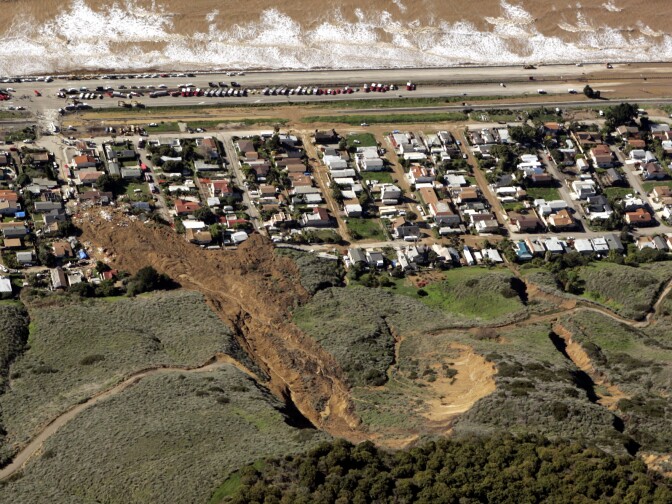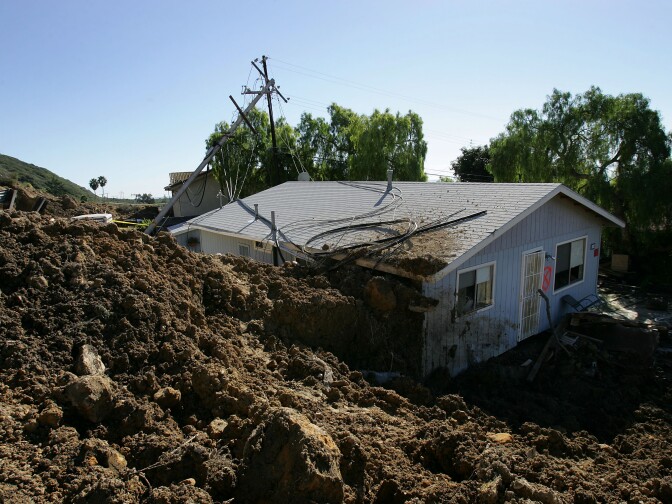Truth matters. Community matters. Your support makes both possible. LAist is one of the few places where news remains independent and free from political and corporate influence. Stand up for truth and for LAist. Make your year-end tax-deductible gift now.
This archival content was originally written for and published on KPCC.org. Keep in mind that links and images may no longer work — and references may be outdated.
Some of Southern California's most devastating mudslides from the past 50 years
The mudslides in Santa Barbara County this week have killed 17 people and injured 28.
But these are just the latest in a long history of Southern California mudslides.
The National Weather Service has a list of "significant weather events" in Southern California - and the section for floods, mud slides, debris flows, and land slides is over 60 pages long.
Here are just a few of the many mudslides that have impacted the area over the past 50 years:
January 18-28, 1969
Heavy rains hit, resulting in 87 deaths from floods and mud slides, and "scores" of deaths from car accidents, according to the National Weather Service's summary of the incident.

Hundreds of homes and buildings were destroyed, and Mt. Baldy Village was particularly hard hit, with 14 homes destroyed there alone.
The Los Angeles Times reported that in Silverado Canyon, a fire station filled with mud. Five bodies were recovered there, and 17 people injured.
February 16-26, 1969
Local jurisdictions had just finished repairing roads and bridges damaged the month prior, when heavy rains descended again.
21 more people died from flooding and mud slides.
Onlooker Arthur Cook recalled his experience later in the New Yorker:
"A wave six to eight feet high came out of Rainbow Canyon. The rock, debris - everything was suspended in the liquid mass. Horrendous boulders, trees, car bodies were suspended in the mass. It sounded like a train–a runaway express train. Just a roar.”
January 3-5, 1974
One person drowned in Temecula after heavy rains caused flooding and mudslides, and hundreds of residents were trapped in Topanga Canyon.
February 13-21, 1980
Six different storms hit Southern California in just over a week, and 30 people were killed by both floods and mudslides. "Post-fire flooding" caused a basin in Harrison Canyon to overflow four times, and hundreds of homes were either destroyed or damaged.
March 4, 1995
A mud slide in La Conchita "destroyed nine houses within a few seconds."
"Despite geologists' early warnings to La Conchita residents that the hillside would crumble under heavy rain, scores of homeowners refused to leave," the L.A. Times reported in 1995.
According to a report by the United States Geological Survey, despite the destruction, no lives were lost.
December 25, 2003
In October that year, wildfires had ravaged the San Bernadino mountains. On Christmas Day, heavy rains led to mud slides, burying a church camp in Waterman Canyon. 23 people had been there for a holiday party, and 13 of them died. Two other victims died in a Devore campground.

January 2005
After days of “record or near-record” rainfall, La Conchita was hit once more. A hill gave way, killing 10 people. The Los Angeles Times reported that over 400,000 tons of mud inundated the community. Thirteen homes were destroyed, and another 23 were damaged, according to a report by the United States Geological Survey.
“Historical accounts and geologic evidence show that landsliding of a variety of types and scales has been occurring at and near La Conchita for many thousands of years, and on a relatively frequent basis, up until the present,” the USGS wrote in the report. “There is no reason to believe this pattern of landsliding will stop.”

Meanwhile, five straight days of heavy rains hit other parts of Southern California, causing other mountain slopes to slide and sewage to spill. A pregnant woman in Highland was killed, and a Crestline hotel was destroyed. The damages were estimated at $100 million, and a state of emergency was declared.











